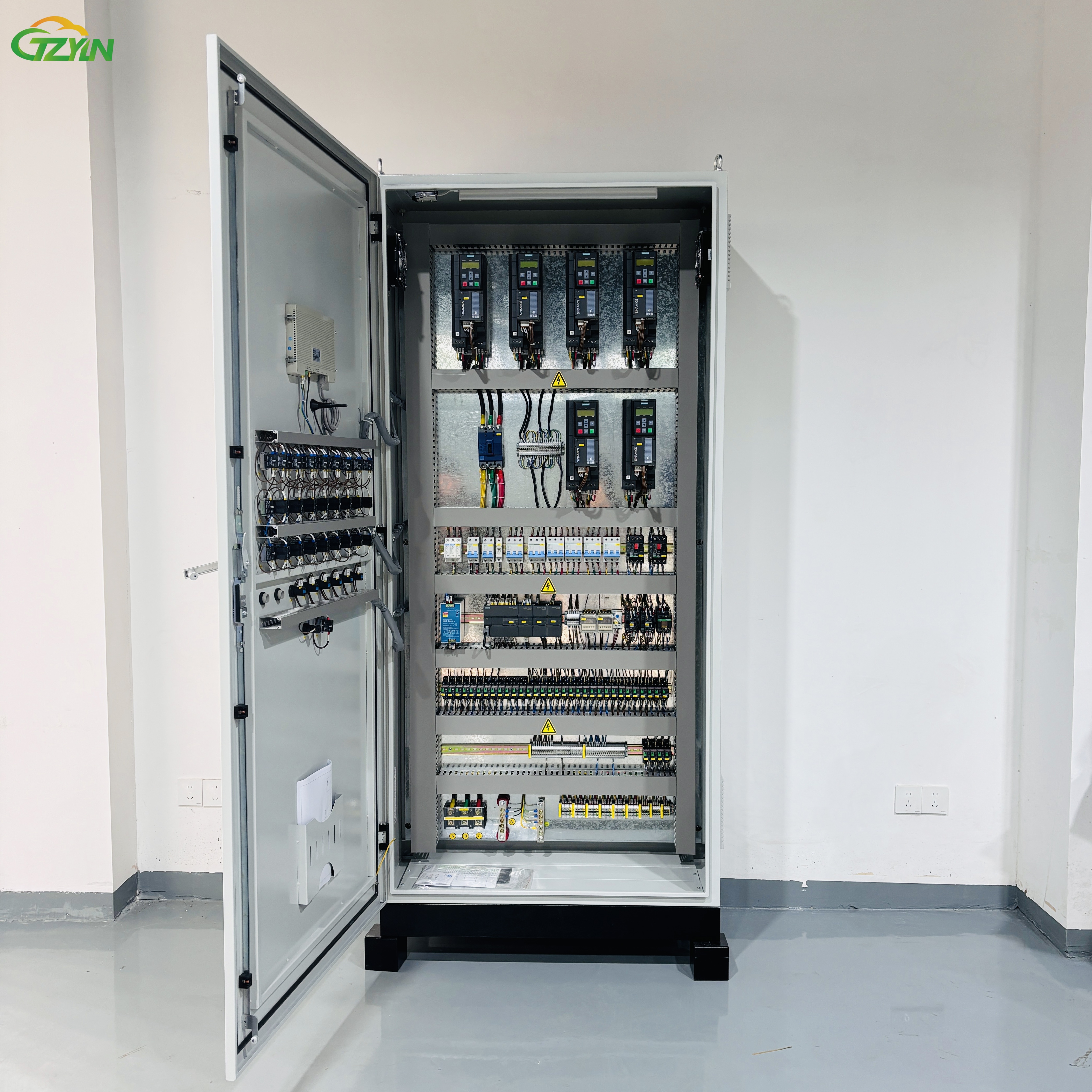PLC Cabinets: Automating Industrial Processes with Programmable Logic Controllers
In modern industrial environments, efficiency, consistency, and adaptability are essential for success. One of the most powerful tools enabling these qualities is the PLC cabinet. By integrating programmable logic controllers into a central control structure, PLC cabinets provide reliable and flexible automation solutions across countless industries. They serve as the brains behind automated machinery, ensuring precise control over processes that once relied heavily on manual intervention.
The Role of PLC Cabinets in Industrial Automation
Centralized Control and Integration
PLC cabinets serve as centralized hubs that house and protect PLC hardware, power supplies, relays, communication devices, and wiring terminals. Their primary role is to manage signals from various sensors, actuators, and machinery, enabling efficient communication and control across an industrial system. This allows operators to execute complex sequences, monitor conditions, and respond to changes in real time.
Supporting Multiple Industrial Applications
From manufacturing and water treatment to logistics and food processing, PLC cabinets are essential wherever precise automation is required. They manage conveyor belts, robotic arms, motor systems, temperature control units, and more. The versatility of PLC cabinets allows them to support both simple applications and highly complex multi-axis control systems within the same operational environment.
Key Components and Functional Design
Internal Structure and Layout
A typical PLC cabinet contains not only the PLC unit itself but also power distribution modules, input/output (I/O) terminals, communication interfaces, and protective devices such as circuit breakers and surge suppressors. The layout is engineered for ease of access, cooling, and expansion. This organized architecture supports rapid troubleshooting and minimizes the risk of system downtime.
Safety and Compliance Standards
Modern PLC cabinets are built to meet strict safety and compliance standards, such as UL, CE, and IEC certifications. These standards ensure that cabinets operate reliably in demanding environments. Proper enclosure ratings (e.g., IP65, NEMA) provide protection from dust, water, or chemicals, making them suitable for both indoor and harsh outdoor applications.
Enhancing Operational Efficiency
Real-Time Monitoring and Diagnostics
A major advantage of PLC cabinets lies in their ability to collect, process, and transmit real-time data. By connecting to SCADA or HMI systems, they allow operators to monitor system performance, diagnose issues quickly, and implement immediate corrective actions. This real-time responsiveness helps reduce downtime and improve overall equipment effectiveness (OEE).
Customization and Scalability
Another strength of PLC cabinets is their customizability. Depending on the application, cabinets can be tailored to meet specific operational demands—whether that’s additional I/O modules, communication gateways, or integration with third-party control systems. Their scalable design makes it easy to expand automation systems without major infrastructure changes.
Benefits to Maintenance and Troubleshooting
Reduced Downtime with Predictive Maintenance
With built-in diagnostics and connectivity to condition-monitoring systems, PLC cabinets enable predictive maintenance strategies. Operators can detect component wear or failure before it leads to a full breakdown. This proactive approach reduces maintenance costs, prevents unplanned downtime, and increases operational reliability.

Streamlined Troubleshooting Processes
When faults occur, PLC cabinets help localize problems with precision. Clear labeling, modular I/O systems, and access to real-time diagnostics mean that maintenance teams can address issues faster. Faster troubleshooting not only restores operations quickly but also reduces the cost of lost productivity.
Industrial Applications Across Sectors
Manufacturing and Assembly Lines
In high-speed manufacturing environments, PLC cabinets ensure seamless coordination between machines, sensors, and operators. They automate repetitive tasks like welding, sorting, labeling, and packaging, leading to improved consistency and production rates.
Energy, Water, and Infrastructure
Utility sectors also rely heavily on PLC cabinets for the management of pumps, valves, flow meters, and power distribution. Their robust performance and adaptability make them ideal for water treatment plants, renewable energy farms, and smart infrastructure systems.
Selecting the Right PLC Cabinet
Key Factors to Consider
Choosing the right PLC cabinet involves evaluating factors like I/O requirements, environmental conditions, communication protocols, and expansion needs. It’s important to ensure compatibility with existing automation systems, especially when integrating with legacy hardware.
Importance of a Reliable Supplier
Working with a trusted supplier ensures that the PLC cabinet is built to your exact operational needs, with consideration for future scalability and maintenance accessibility. Professional guidance during the design phase can save time, reduce installation errors, and support long-term efficiency.
Frequently Asked Questions (FAQ)
What is the function of a PLC cabinet?
A PLC cabinet houses and protects the components required for automated control using programmable logic controllers. It connects sensors and actuators to execute control logic in industrial processes.
How does a PLC cabinet improve efficiency?
It automates repetitive tasks, ensures consistent operations, provides real-time diagnostics, and supports predictive maintenance strategies.
Can PLC cabinets be used in outdoor environments?
Yes. With proper enclosure ratings like IP65 or NEMA 4X, PLC cabinets can function in outdoor or harsh industrial settings.
Are PLC cabinets customizable?
Absolutely. They can be tailored for specific applications, including additional communication modules, safety relays, or expanded I/O configurations.
Do PLC cabinets require regular maintenance?
Yes. Regular inspections and firmware updates help maintain performance, prevent electrical faults, and ensure operational safety.


